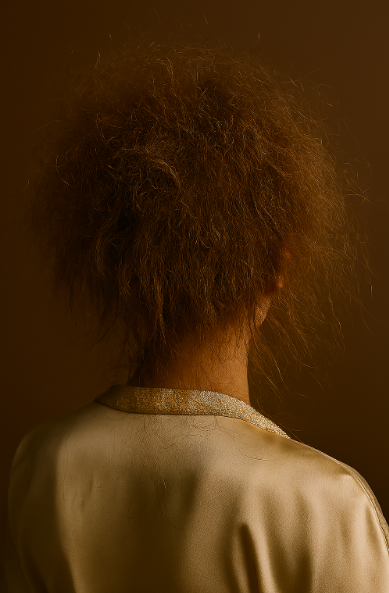Frizz, Meet Dunedin Hair Design
Frizz isn’t a personality flaw; it’s a signal. It tells you your hair’s cuticle is raised, moisture balance is off, or the environment is working against your strands. As a cosmetologist with significant experience, you need a clear playbook that mixes sensible science, salon-grade practice, and a great hair dresser with experience (think Dunedin Hair Design).
Why Frizz Happens
Frizz occurs when the hair cuticle lifts and lets moisture in unevenly, causing strands to swell, separate, and reflect light poorly. Triggers include humidity, heat damage, chemical processing, rough handling, and product buildup; each creates a slightly different kind of frizz but the same unhappy result—hair that’s unpredictable and hard to styletoneop.care. Humidity swells hair cuticles; heat and chemicals weaken structural proteins; and friction from cotton towels and pillowcases roughs the surface, making frizz worse.
Ten Natural Strategies Naturalists Use to Confront Frizz
- Use lightweight oils as a finishing move, not a cure-all. A few drops of argan or jojoba oil smoothed through mid-lengths and ends seals cuticles and adds shine without weighing hair down. Use sparingly on damp hair for even distribution; on dry hair, dot and blend where you need control.
- Treat weekly with deep-conditioning masks made from pantry staples. Avocado, banana, egg, yogurt, honey, and olive or coconut oil are classic building blocks. They deliver fats, proteins, and humectants that temporarily restore suppleness and reduce porosity—so the cuticle lies flatter and frizz decreases.
- Finish washes with an acidic rinse to rebalance pH and seal cuticles. A diluted apple cider vinegar or rice-water rinse helps flatten the cuticle and add shine; use sparingly and follow recommended dilution to avoid irritation.
- Switch to gentler drying and detangling tools. Microfiber towels, cotton T-shirts, and wide-tooth combs reduce friction and mechanical damage. Pat, squeeze, or wrap hair rather than rubbing, and detangle when hair is conditioned and slippery to minimize breakage.
- Sleep on silk or satin. Silk pillowcases and scarves cut friction dramatically. They help hair retain oils and prevent the tangling and breakage that amplify frizz overnight.
- Use leave-in conditioners and light humectants strategically. Leave-ins containing glycerin, panthenol, or light oils give sustained moisture and slip. In dry weather use heavier sealing oils; in humid weather, rely on light films and anti-humidity sprays to block moisture uptake.
- Limit heat and learn heat-free styling. When you must use hot tools, apply a heat protectant and lower temperatures. For everyday styling, embrace braids, twist-outs, overnight rollers, and plopping techniques that create polished looks without thermal stress.
- Incorporate bond-building and protein treatments sensibly. If hair is heat- or chemical-damaged, protein treatments and bond-repair products can strengthen strands and reduce frizz from breakage. Use them on a schedule and complement them with ample moisture so hair stays balanced, not brittle.
- Make warm oil or pre-shampoo oiling part of your routine. Warm oil massages open the cuticle and allow oils to penetrate. A short, warm-oil treatment before washing can restore shine and reduce the roughness that causes frizz.
- Get consistent trims and a haircut that respects texture. Split ends magnify frizz. Regular trims keep ends tidy, and a stylist’s shape that removes weight and respects curl pattern reduces the unpredictable halo effect of frizz.
Each tactic works best as part of a routine. Think of them as notes in a chord: alone they help, together they sing.
A Simple Weekly Routine Editors Actually Use
- Day 1 (Wash Day): Sulfate-free shampoo; hydrating conditioner; apply a deep mask (avocado, honey, or store-bought rich mask) for 20–40 minutes; rinse with cool water or finish with a diluted ACV/rice-water rinse for cuticle sealing.
- Styling: Leave-in conditioner on damp hair, distribute a few drops of argan oil, and style with a wide-tooth comb or fingers.
- Night: Silk pillowcase or scarf; loosely braid or pineapple curls if curly to minimize friction and preserve pattern.
- Weekly add-ons: Hot-oil or coconut oil overnight mask once a week for very dry hair; protein or bond-building treatment every 3–6 weeks depending on damage level.
- Monthly: Clarifying wash if buildup is present, followed by a deep conditioning session to restore moisture.
Consistency matters more than frequency of any single miracle treatment. Small habits repeated yield real change.
Long Game: Lifestyle, Diet, and Mindset
Your hair’s baseline health comes from the inside as much as the outside. Editors and pros agree: hydration, protein, healthy fats, and micronutrients matter. Protein supports structure; omega-3s and vitamin E help scalp health and oil balance; vitamin C supports collagen production for hair strength. Hydrate, eat whole foods, and consider a targeted supplement when diet gaps exist.
Also, stress and sleep shape hair quality. Chronic stress can precipitate shedding and poorer hair condition; good rest and measured stress-management routines make every topical treatment more effective.
A Word About Expectations
Frizz can be managed dramatically, but it isn’t always “fixable” in the sense of making textured hair straight. The goal is control and health: smoother cuticles, fewer breakages, better definition for waves and curls, and predictable styling windows. Accept texture, learn it, and work with it—results come faster and last longer when you treat your hair like the living, reactive material it is.
Conclusion
If you love styling, keep styling—just with less aggression. A couple of shifts (silk at night, mindful heat use, weekly deep conditioning, and a reliable oil) will transform how your hair behaves. Natural remedies are powerful, widely supported, and often inexpensive; pairing them with professional-grade products and sensible habits is the elegant compromise between vanity and care. The most stylish hair is healthy hair—work for the texture you have, protect it, and frizz will stop running the show.
If you need help with your frizzy hair, call us or contact Dunedin Hair Design today. We have services and products that can help you naturally confront frizzy hair situations.
